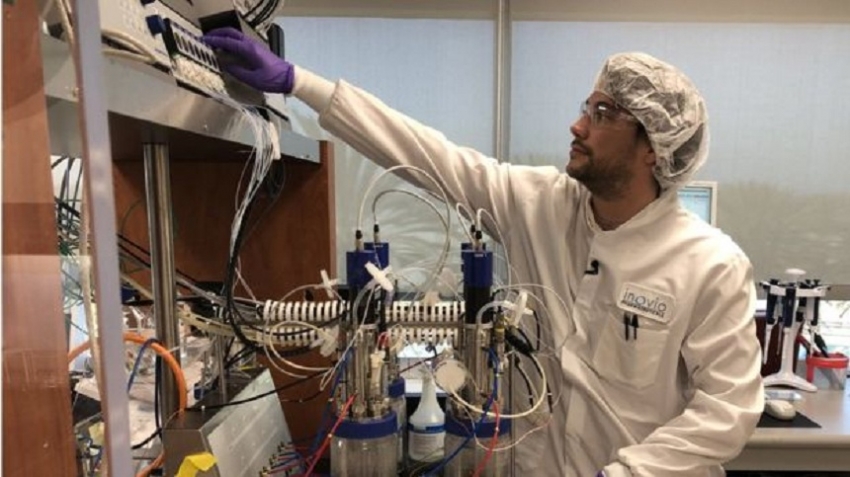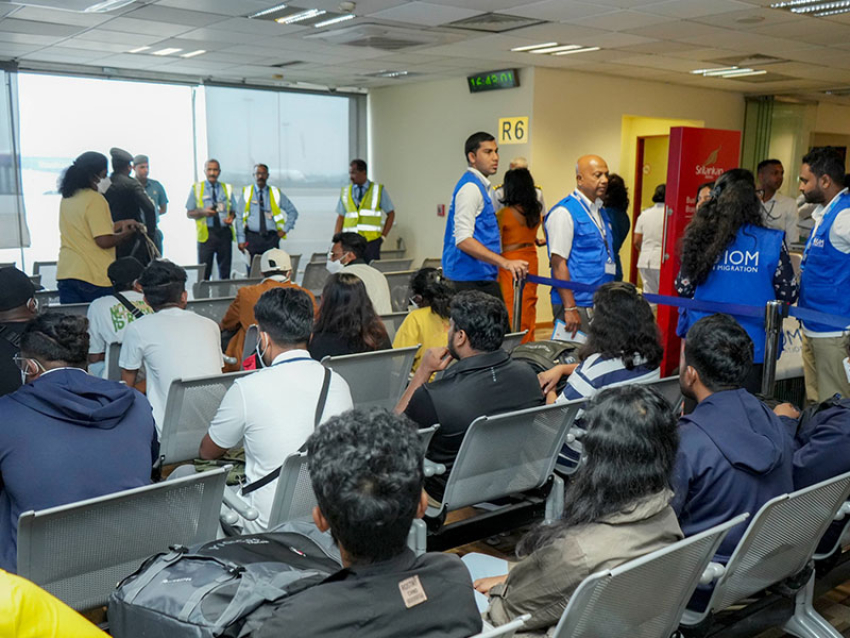A deadly new virus. Thousands of people infected. No cure. No vaccine.We've been here many times before.In the past five years alone, the world has faced outbreaks of Ebola, Zika, another coronavirus called Mers (Middle East Respiratory Syndrome), and now the virus simply known as "2019-nCoV".It's already infected thousands of people and killed more than 100.
But unlike in many previous outbreaks, where vaccines to protect people have taken years to develop, research for a vaccine to help stem this outbreak got under way within hours of the virus being identified.Chinese officials released its genetic code very quickly. That information helps scientists determine where the virus probably came from, how it might mutate as the outbreak develops, and how to protect people against it.With technological advances and greater commitment from governments around the world to fund research on emerging diseases, research facilities were able to spring into action fast.
At Inovio's lab in San Diego, scientists are using a relatively new type of DNA technology to develop a potential vaccine. "INO-4800" - as it's currently called - with plans for it to enter human trials by the early summer.Kate Broderick, senior vice-president of research and development at Inovio, said: "Once China had provided the DNA sequence of this virus, we were able to put it through our lab's computer technology and design a vaccine within three hours.Our DNA medicine vaccines are novel in that they use DNA sequences from the virus to target specific parts of the pathogen which we believe the body will mount the strongest response to.
"We then use the patient's own cells to become a factory for the vaccine, strengthening the body's own natural response mechanisms."
Image caption
Scientists hope to have a vaccine ready to enter human trial by early summer
Inovio says if the initial human trials are a success, larger trials would follow, ideally in an outbreak setting in China "by the end of the year".
It is impossible to predict whether this outbreak is likely to have ended by then. But if Inovio's timeline goes to plan, the company says it will be the quickest a new vaccine has ever been developed and tested in an outbreak situation.
The last time a similar virus - Sars - emerged in 2002 - China was slow to let the world know what was happening. So by the time work on a vaccine started in earnest, the outbreak was almost over.
The timeline of 2019-nCoV
31 December 2019 - China alerts the World Health Organization (WHO) about a spate of pneumonia-like cases in Wuhan
1 January 2020 - The seafood/animal market believed to be at the centre of the outbreak is closed
9 January - The WHO says the infection is caused by a new type of coronavirus
10 January - China shares the genetic code of the new virus
11 January - Scientists start working on a vaccine - and the first death confirmed
13 January - Virus spreads abroad for the first time, with a case in Thailand
The work in these labs is being funded by the Coalition for Epidemic Preparedness Innovations (Cepi), which is made up of and funded by governments and philanthropic organisations from around the world.
It was created in the aftermath of the Ebola outbreak in West Africa to provide funding to accelerate the development of vaccines for new diseases.
Dr Melanie Saville, director of vaccine research and development at Cepi, said: "The mission is to make sure that outbreaks are no longer a threat to humanity and to develop vaccines for emerging infectious diseases."
'Molecular clamp'
Cepi is also funding two other programmes that are developing a vaccine for this new coronavirus.
The University of Queensland is working on a "molecular clamp" vaccine, which it says "enables targeted and rapid vaccine production against multiple viral pathogens."
Image caption
Fermenters grow bacteria to provide the main ingredient for a vaccine
Moderna Inc in Massachusetts has also joined forces with the US National Institute of Allergy and Infectious Diseases to accelerate its research.
The WHO is co-ordinating this global quest for a new vaccine. It says it is following the progress of a number of research facilities, including the three supported by Cepi.
Although efforts to come up with a vaccine for this new coronavirus have been accelerated, research is still at an early stage at all the facilities in the race to find a new vaccine. Clinical trials take time and are best carried out within an outbreak setting.
There are no guarantees any of the designs so far will be safe and effective enough to be used in the outbreak in China.
Ana Maria Henao-Restrepo from the WHO's Health Emergencies programme said: "We have developed a framework to inform decisions on which candidate vaccine(s) should be tested first.
"The experts will consider a number of criteria, including acceptable safety profile, induction of appropriate immune responses, and the timely availability of sufficient supplies of vaccine doses."Understanding the disease, its reservoirs, its transmission, its clinical severity and developing effective counter measures is critical for the control of the outbreak."
The WHO is due to decide which vaccine will be tested on humans first in the coming days.Inovio has announced that it will collaborate with a biotech company in Beijing who can help manage human trials which are due to start in the summer.Dr J. Joseph Kim, president and CEO of Inovio, said: "This collaboration allows us to enter China and deliver our vaccine into the areas where they need it most as soon as possible."
How come a doctor in his 30s has died? And other questions
8 February 2020
Share this with Facebook Share this with Messenger Share this with Twitter Share this with Email Share
Related TopicsCoronavirus outbreak
Image copyrightSHUTTERSTOCK
There have now been more than 31,000 cases of coronavirus, which has been declared a global health emergency. The disease has spread to many countries, including the UK.
The answers to a selection of readers' questions about the new virus are below.
How safe is it to travel in and out of countries that haven't stopped flights? - Jason Riches, Colchester
It is worth remembering this is almost exclusively an outbreak in China. At the moment, more than 99% of cases are in China and the majority of those are in just one province (Hubei). The Foreign and Commonwealth Office advises against all travel to Hubei and against all but essential travel to the rest of mainland China. But no travel restrictions are currently advised for other countries.
How come a Chinese doctor in his mid-30's has died from this 'flu-like' virus? I thought it is just babies and the elderly who are at risk? Jeffrey
It might be that Dr Li had other, unreported, health conditions that put him at greater risk. Or he may have been exposed to a higher initial dose of the virus that meant he developed more severe symptoms. But it is also worth remembering that seasonal flu mostly kills the young and old, but can kill people in the prime of their life.
Image copyrightEPA/WU HONG
Image caption
Chinese people wear masks near the Tiananmen Gate Tower in Beijing, China
Is a face mask useful against the virus and how often does it have to be replaced? Tom Lim, Bali, Indonesia
There is very little evidence that wearing face masks make a difference. Experts say good hygiene - such as regularly washing your hands and certainly before putting them near your mouth - is vastly more effective.
What is the incubation period for the coronavirus? - Gillian Gibs
The World Health Organization says the incubation period, which is the time before symptoms appear, ranges from two to 10 days.
These estimates will be narrowed down as more data becomes available.
Knowing and understanding the incubation period is very important. It allows doctors and health authorities to introduce more effective ways to control the spread of the virus.
It means, for instance, that they can introduce more effective quarantine systems, isolating those suspected of carrying the virus from others.
Why are we catching more diseases from animals?
What does coronavirus do to the body
How worried should we be?
Wuhan: The London-sized city where the virus began
Do people who have contracted coronavirus return to full health? - Chris Stepney, Milton Keynes
Yes. Many of those who contract coronavirus will experience only mild symptoms. These include fever, coughing and respiratory problems. Most people are expected to make a full recovery.
But it can pose a particular risk for elderly people and those with pre-existing problems like diabetes or cancer, or weak immune systems.
As of 7 February, Chinese health authorities said that 636 people had died from the virus. The number of confirmed cases stands at 31,198.
An expert at China's National Health Commission has said that it can take a week to recovery from mild coronavirus symptoms.
Can the coronavirus be transferred through items bought from Wuhan and posted to UK? - Stefan
There is no evidence this is a risk. Some diseases - including the coronavirus that causes Sars - can spread through surfaces contaminated by people coughing or sneezing on them.
It has not been shown this new coronavirus can do that. Even if it could, there would still be questions about whether international shipping would be a major problem.
Cold viruses tend to survive less than 24 hours outside the human body although norovirus (a severe stomach bug) can last months outside the body.
The most reassuring fact so far is that cases seem to require close contact with another person - say, a family member or healthcare worker - in order to spread.
The London-sized city where the virus began
23 January 2020
Share this with Facebook Share this with Messenger Share this with Twitter Share this with Email Share
Related TopicsCoronavirus outbreak
Image copyrightGETTY IMAGES
Image caption
The Yangtze (brown) and Han rivers (blue) merge in Wuhan
Wuhan may not be a well-known Chinese mega-city like Beijing or Shanghai.
But the place where the coronavirus outbreak emerged is, in fact, a crowded metropolis with connections to every part of the globe.
Estimates vary on the exact size of the population, with local government officials putting the figure at 11 million, though UN data from 2018 says 8.9 million people live in the central Chinese city.
Either way, the city is around the same size as London, but much bigger than Washington DC.
One estimate makes it the 42nd biggest city in the world, and the seventh biggest in China.
And it's the size - and economic clout - of Wuhan that explains why the virus has travelled quickly across Asia, and even to the US.
In short, the virus has spread so widely because lots of people visit Wuhan and take the virus home with them.
Image copyrightGETTY IMAGES
Image caption
Wuhan was a host city for the 2019 Basketball World Cup - including this match between Argentina and Nigeria
Wuhan international airport handled 20 million passengers in 2016, and offers direct flights to London, Paris, Dubai, and other cities around the world.
The city is built along the Yangtze river and, according to its website, it is a "foundation of in both hi-tech manufacturing and traditional manufacturing".
It has a series of industrial zones, 52 "institutions of higher learning", and claims more than 700,000 students - including, reportedly, the largest number of undergraduates in the country.
Some 230 of the world's 500 biggest companies (as measured by the Fortune Global list) have invested there.
There is also notable investment from France - which had a foreign concession in Hankou, in today's Wuhan, between 1886 and 1943. More than 100 French firms have invested in the city and Peugeot-Citroen has a Chinese joint-venture plant there.
Wuhan can also serve as a gateway to the Three Gorges - a tourist region and home to a huge hydroelectric dam.
New China virus 'could mutate and spread further'
New China virus: Your questions answered
Chinese virus: How worried should we be?
So, although the coronavirus originated in a local seafood market, the flow of people in and out of Wuhan has ensured its spread.
The US patient, for example, had recently visited Wuhan, as had both Japanese patients. The Korean patient lived there. The case in Thailand is a Chinese tourist from Wuhan.
The huge flow of people in and out of Wuhan will only increase as Chinese New Year approaches, and millions of people return home to celebrate.
China's National Health Commission said travellers should avoid Wuhan, and that Wuhan residents should not leave the city.
But Wuhan's status as one of the biggest - and most connected - places in the world means international cases will almost certainly continue to emerge.
Media captionChina health officials: "Don't go to Wuhan, don't leave Wuhan"
Related Topics
China economyCoronavirus outbreakChinaWuhan




















